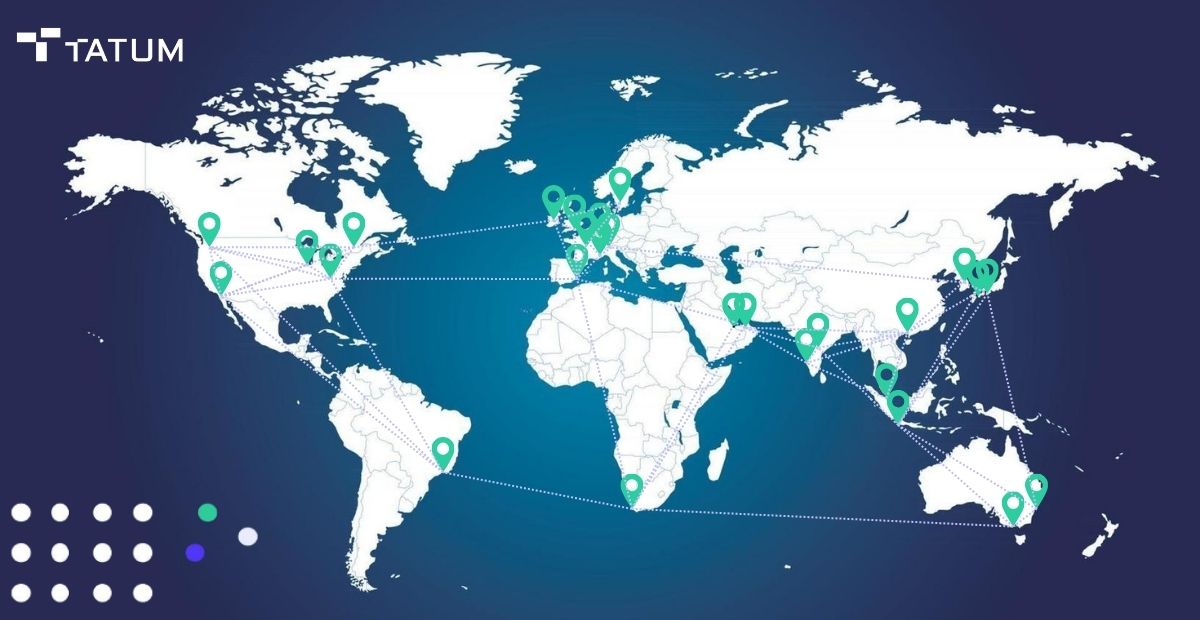Fast Apps Need Faster RPCs: Tatum Keeps You Ahead, Anywhere



When people talk about blockchain speed, they usually point to the protocol, “Solana does thousands of TPS,” “Ethereum finalizes in X seconds,” and so on.
That’s fine, but if you’ve ever actually built on these chains, you know the hidden bottleneck isn’t the chain itself. It’s the RPC.
Every wallet balance check, every NFT mint, every transaction submission, it all flows through your RPC provider. And if that provider drags, so does your app.
For developers, those extra milliseconds aren’t abstract.
They’re the difference between:
- catching or missing an arbitrage trade,
- users getting a smooth mint or seeing a failed transaction,
- games feeling responsive or laggy,
- dashboards updating instantly or making people hit refresh.
That’s why RPC latency is more than just a number. It’s the heartbeat of your app.
We put our RPC infrastructure under scrutiny with CompareNodes’ global benchmarks. See for yourself.
The results: Tatum leads across multiple regions and chains.

Ethereum may be the most battle-tested blockchain, but it’s also one of the busiest. Whether it’s a DEX trade, an NFT mint, or a simple balance check, the speed of your RPC call directly impacts how fast users see results.
On-chain competition is fierce, a few milliseconds can decide who lands a trade first or whether a transaction confirms smoothly.
Blockchain RPC Gateway for Ethereum
| City | Tatum | QuickNode | Alchemy | Chainstack | Ankr |
|---|---|---|---|---|---|
| Frankfurt | 17 ms | 38 ms | 51 ms | 64 ms | 128 ms |
| Virginia | 19 ms | 42 ms | 59 ms | 70 ms | 132 ms |
| Singapore | 27 ms | 61 ms | 82 ms | 95 ms | 188 ms |
| São Paulo | 34 ms | 89 ms | 142 ms | 157 ms | 201 ms |
| Mumbai | 53 ms | 68 ms | 101 ms | 118 ms | 201 ms |
Solana was designed for high throughput and low fees, but if your RPC provider lags, you’ll never feel that speed. Latency here directly impacts trading bots, real-time dApps, and especially on-chain games where responsiveness is everything. Independent benchmarks show Tatum keeping Solana RPC calls under 30ms across Europe and North America, and under 35ms in Asia, while most competitors sit 2-8× slower.
That means Solana apps built on Tatum actually perform the way Solana was meant to, fast, smooth, and ready for scale.
Blockchain RPC Gateway for Solana
| City | Tatum | QuickNode | Helius | Chainstack | Ankr |
|---|---|---|---|---|---|
| London | 22 ms | 47 ms | 115 ms | 134 ms | 201 ms |
| Ohio | 25 ms | 49 ms | 123 ms | 142 ms | 215 ms |
| Tokyo | 32 ms | 66 ms | 144 ms | 162 ms | 280 ms |
| Singapore | 32 ms | 66 ms | 145 ms | 163 ms | 281 ms |
| Virginia | 24 ms | 50 ms | 120 ms | 140 ms | 210 ms |
Sui’s architecture was designed to enable fast, parallel execution, but developers only feel that power if the RPC layer keeps up.
Low latency here is critical for consumer apps, games, and asset-rich dApps that depend on instant responses
Blockchain RPC Gateway for Sui
| City | Tatum | QuickNode | Alchemy | Chainstack | Ankr |
|---|---|---|---|---|---|
| Frankfurt | 18 ms | 39 ms | 55 ms | 72 ms | 129 ms |
| Virginia | 20 ms | 43 ms | 60 ms | 75 ms | 135 ms |
| Singapore | 29 ms | 64 ms | 88 ms | 102 ms | 192 ms |
| Mumbai | 30 ms | 70 ms | 96 ms | 112 ms | 205 ms |
| Tokyo | 33 ms | 67 ms | 92 ms | 109 ms | 199 ms |
A lot of providers do okay when traffic is low, then collapse when demand spikes. We built Tatum differently.
- Global load balancing keeps your requests close to home.
- Automatic failover means downtime isn’t your problem.
- Smarter routing splits heavy archive queries from real-time calls.
- Constant expansion, new balancers get added where builders are active (most recently for Berachain, Sonic, and Ronin).
And yes, we stress-tested it. At 10,000 requests per second, Tatum RPCs kept latency low and delivered zero errors.
All latency results shown here come from independent benchmarks. Anyone can compare providers themselves using chaintester.io, a public tool that runs global RPC performance tests across major blockchains and providers.
Experience what fast RPC really means, get your API key instantly from the Tatum Dashboard.
Get API Key →4 examples of what that speed really means once you’re shipping:
1. A DeFi bot doesn’t miss its window because the RPC call returned a fraction of a second sooner. When trades are competing in the same block, that’s often the whole game.
2. An NFT drop runs cleanly instead of becoming a flood of retries. We’ve all seen launches where thousands of people click “mint,” half the transactions fail, and the Discord fills with complaints. That’s almost always infrastructure struggling to keep up, not the chain itself.
3. A game stays fluid because moves register instantly. Players don’t care about milliseconds in theory, they care that it feels like a normal game, not a laggy demo.
4. AI agents powered by our MCP server can pull wallet balances, transaction history, or NFT data fast enough to act in real time. When an agent is making decisions autonomously, you can’t afford RPC delays piling up.
In other words: if your app needs to feel “live,” the RPC layer can’t be the weakest link. Learn more about MCP.
Your RPC shouldn’t be the thing you think about at 2am when users are complaining.
With Tatum, you don’t have to. Our job is to disappear into the background and quietly deliver speed, consistency, and reliability, so you can focus on the product your users actually see.
That’s why we designed our RPC gateway to be sub-30ms across regions, tested it relentlessly to 99.9% uptime, and made sure it scales as your user base grows. Whether you’re building a small side project or running infra at enterprise scale, you’ll get the same guarantees: low latency, global coverage, and no babysitting required.
You keep building. We make sure the RPC doesn’t get in the way.
👉 Grab your free API key and see how fast “fast enough” really feels.
Build blockchain apps faster with a unified framework for 60+ blockchain protocols.